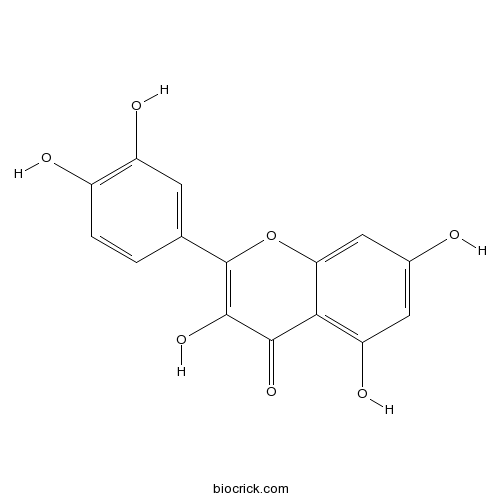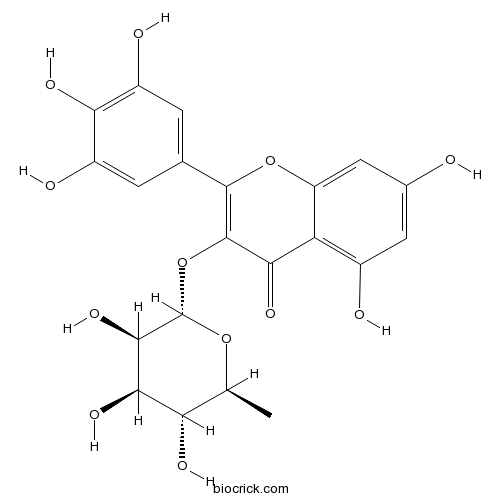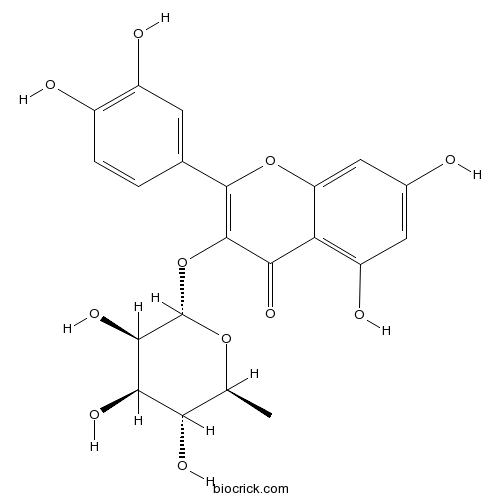Zelkova serrata
Zelkova serrata
1. The products in our compound library are selected from thousands of unique natural products; 2. It has the characteristics of diverse structure, diverse sources and wide coverage of activities; 3. Provide information on the activity of products from major journals, patents and research reports around the world, providing theoretical direction and research basis for further research and screening; 4. Free combination according to the type, source, target and disease of natural product; 5. The compound powder is placed in a covered tube and then discharged into a 10 x 10 cryostat; 6. Transport in ice pack or dry ice pack. Please store it at -20 °C as soon as possible after receiving the product, and use it as soon as possible after opening.
Natural products/compounds from Zelkova serrata
- Cat.No. Product Name CAS Number COA
-
BCN6049
Quercetin117-39-5
Instructions

-
BCN1136
Myricitrin17912-87-7
Instructions

-
BCN5665
Quercitrin522-12-3
Instructions

-
BCN5692
Myricetin529-44-2
Instructions

Life cycle, Ecological Characteristics, and Control of Trachys yanoi (Coleoptera: Buprestidae), an Important Pest of Zelkova serrata.[Pubmed: 28338630]
None
Responses of gas-exchange rates and water relations to annual fluctuations of weather in three species of urban street trees.[Pubmed: 25391689]
The frequency of extreme weather has been rising in recent years. A 3-year study of street trees was undertaken in Tokyo to determine whether: (i) street trees suffer from severe water stress in unusually hot summer; (ii) species respond differently to such climatic fluctuations; and (iii) street trees are also affected by nitrogen (N) deficiency, photoinhibition and aerosol pollution. During the study period (2010-12), midsummers of 2010 and 2012 were unusually hot (2.4-2.8 °C higher maximum temperature than the long-term mean) and dry (6-56% precipitation of the mean). In all species, street trees exhibited substantially decreased photosynthetic rate in the extremely hot summer in 2012 compared with the average summer in 2011. However, because of a more conservative stomatal regulation (stomatal closure at higher leaf water potential) in the hot summer, apparent symptoms of hydraulic failure were not observed in street trees even in 2012. Compared with Prunus × yedoensis and Zelkova serrata, Ginkgo biloba, a gymnosperm, was high in stomatal conductance and midday leaf water potential even under street conditions in the unusually hot summer, suggesting that the species had higher drought resistance than the other species and was less susceptible to urban street conditions. This lower susceptibility might be ascribed to the combination of higher soil-to-leaf hydraulic conductance and more conservative water use. Aside from meteorological conditions, N deficiency affected street trees significantly, whereas photoinhibition and aerosol pollution had little effect. The internal CO2 and δ(13)C suggested that both water and N limited the net photosynthetic rate of street trees simultaneously, but water was more limiting. From these results, we concluded that the potential risk of hydraulic failure caused by climatic extremes could be low in urban street trees in temperate regions. However, the size of the safety margin might be different between species.
Selective apoptotic effect of Zelkova serrata twig extract on mouth epidermoid carcinoma through p53 activation.[Pubmed: 22498930]
Apoptosis or programmed cell death plays an essential role in chemotherapy-induced tumor cell killing, and inducers of apoptosis are commonly used in cancer therapy. Treatment with Zelkova serrata extracts was performed in human gingival fibroblast (HGF), mouth epidermoid carcinoma cell (KB), lower gingival squamous cancer cell (YD38) and tongue mucoepidermoid carcinoma cells (YD15). We observed that extract prepared from Zelkova serrata twig selectively inhibited proliferation of various oral cancer cells, but not normal gingival fibroblasts, in a dose-dependent manner. Caspase-8-mediated apoptosis was induced by treatment with the extract only in mouth epidermoid carcinoma and not in other types of cancer cells, including lower gingival squamous cell carcinoma. The selective apoptotic effect of Zelkova serrata twig extract in mouth epidermoid carcinoma was dependent on normal p53 status. Apoptosis was not remarkably induced by treatment with the extract in either lower gingival squamous or tongue mucoepidermoid carcinoma cells, both of which contain abnormalities of p53. Upon treatment with Zelkova serrata twig extract, mouth epidermoid carcinoma cells accumulated in S phase by activation of p21. These data indicate that Zelkova serrata twig extract exerted a cancer type-specific, p53-dependent apoptotic effect and disturbed the cell cycle, which suggests that herbal medicine could be a treatment for specific types of cancers.
Factors contributing to accuracy in the estimation of the woody canopy leaf area density profile using 3D portable lidar imaging.[Pubmed: 17977852]
Factors that contribute to the accuracy of estimating woody canopy's leaf area density (LAD) using 3D portable lidar imaging were investigated. The 3D point cloud data for a Japanese zelkova canopy [Zelkova serrata (Thunberg) Makino] were collected using a portable scanning lidar from several points established on the ground and at 10 m above the ground. The LAD profiles were computed using voxel-based canopy profiling (VCP). The best LAD results [a root-mean-square error (RMSE) of 0.21 m(2) m(-3)] for the measurement plot (corresponding to an absolute LAI error of 9.5%) were obtained by compositing the ground-level and 10 m measurements. The factors that most strongly affected estimation accuracy included the presence of non-photosynthetic tissues, distribution of leaf inclination angles, number (N) of incident laser beams in each region within the canopy, and G(theta(m)) (the mean projection of a unit leaf area on a plane perpendicular to the direction of the laser beam at the measurement zenith angle of theta(m)). The influences of non-photosynthetic tissues and leaf inclination angle on the estimates amounted to 4.2-32.7% and 7.2-94.2%, respectively. The RMSE of the LAD estimations was expressed using a function of N and G(theta(m)).
Enhanced efficacy of 7-hydroxy-3-methoxycadalene via glycosylation in in vivo xenograft study.[Pubmed: 17889531]
7-Hydroxy-3-methoxycadalene, isolated from Zelkova serrata Makino, was confirmed as a biologically active natural compound. In this study, the efficacy of cadalene as an anticancer agent was tested. In order to address the poor physicochemical properties of cadalene, we designed and synthesized glycosylated cadalene derivatives for improved solubility and efficient drug delivery as a potential prodrug. In vitro cell viability assays confirmed that glycosylated cadalenes were less toxic and more soluble than cadalene. In an in vivo xenograft study in mice, the oral administration of glycosylated cadalenes caused a significant reduction in tumor size.
Effects of 7-hydroxy-3-methoxycadalene on cell cycle, apoptosis and protein translation in A549 lung cancer cells.[Pubmed: 17673824]
Previously we reported that cadalene extracted from Zelkova serrata inhibited lung tumorigenesis in mice. However, the precise mechanism has not yet investigated. Here, we examined the effects of cadalene on signal pathways important for apoptosis, cell cycle, and protein translation in lung cancer cells. Our results showed that cadalene suppressed the expression of Akt and its phosphor-forms through controlling PI3K and PTEN. Cadalene also induced apoptosis through facilitating pro-apoptotic protein expression. In addition, cadalene caused cell cycle arrest and decreased mTOR-mediated protein translation. Taken together, cadalene may be developed as a lung cancer therapeutic agent in the future.
Long-term variation in fruiting and the food habits of wild Japanese macaques on Kinkazan Island, northern Japan.[Pubmed: 17044008]
We studied the relationship between the food habits of Japanese macaques (Macaca fuscata) and the availability of nuts (Fagus crenata, Zelkova serrata, Carpinus spp., and Torreya nucifera) on Kinkazan Island, northern Japan, from 1997 to 2005 to examine the long-term variations in both food habits and availability. The food habits of the monkeys showed clear seasonal changes: the staple foods were woody leaves and flowers in spring (May and June), woody leaves and seeds or fruits other than nuts in summer (July and August), nuts and seeds or fruits other than nuts in fall (September-November), and herbaceous plants in winter (December-April). The availability of nuts, combinations of masting species, and energy production varied among years. Food habits varied among years, but the magnitude of variability of food habits differed among seasons, with large variability during summer and winter, and small variability in spring. Food availability was poor in summer and winter, but in several years the monkeys were able to consume nuts during those seasons. We emphasize the importance of conducting long-term studies on both food availability and the food habits of animals in the temperate zone.
Inhibitory effects of 7-hydroxy-3-methoxy-cadalene on 4-(methylinitrosamino)-1-(3-pyridyl)-1-butanone (NNK)-induced lung tumorigenesis in A/J mice.[Pubmed: 15327828]
The present study was undertaken to estimate the effect of 7-hydroxy-3-methoxycadalene (cadalene) extracted from Zelkova serrata on 4-(methylinitrosamino)-1-(3-pyridyl)-1-butanone (NNK)-induced lung tumorigenesis in A/J mice. Twenty mice received orally NNK at a dose of 65 microg/ml water for 7 weeks following by free feeding of a commercial diet not containing cadalene for 2 weeks. Control group was maintained without NNK and cadalene administration and/or treatment groups with NNK and cadalene (6.25, 25, 100 mg/kg feed) feeding for 25 weeks. Lung tumors were induced by NNK at incidence ranging from 10 to 45%. Cadalene treatment (100 mg/kg feed) group significantly reduced the incidence of adenomas from 45 to 10% (P < 0.05), and other cadalene treatment group decreased cancer incidences in a concentration dependent manner. The results of our study strongly indicate that cadalene is capable of inhibiting development of NNK-induced lung tumorigenesis in A/J mice.


